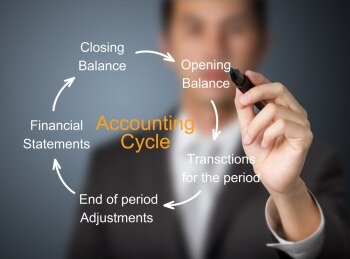
You must continue to use the same depreciation method and convention as the transferor. You can depreciate the part of the property’s basis that exceeds its carryover basis (the transferor’s adjusted basis in the property) as newly purchased MACRS property. You figure your declining balance rate by dividing the specified declining balance percentage (150% or 200% changed to a decimal) by the number of years in the property’s recovery period. For example, for 3-year property depreciated using the 200% declining balance method, divide 2.00 (200%) by 3 to get 0.6667, or a 66.67% declining balance rate.
- Because you did not place any property in service in the last 3 months of your tax year, you used the half-year convention.
- The depreciation for the computer for a full year is $2,000 ($5,000 × 0.40).
- The machine is 7-year property placed in service in the first quarter, so you use Table A-2 .
- You did not elect a section 179 deduction and the property is not qualified property for purposes of claiming a special depreciation allowance, so your property’s unadjusted basis is its cost, $10,000.
You multiply the adjusted basis of the property ($1,000) by the 40% DB rate. You apply the half-year convention by dividing the result ($400) by 2. Depreciation for the first year under the 200% DB method is $200. Instead of using the rates in the percentage tables to figure your depreciation deduction, you can figure it yourself.
Best Accounting Software for Small Businesses
Cost generally is the amount paid for the asset, including all costs related to acquiring and bringing the asset into use.[7] In some countries or for some purposes, salvage value may be ignored. The rules of some countries specify lives and methods to be used for particular types of assets. However, in most countries the life is based on business experience, and the method may be chosen from one of several acceptable methods. The method records a higher expense amount when production is high to match the equipment’s higher usage. It is, obviously, most useful for depreciating production machinery.

When a company buys an asset, it records the transaction as a debit to increase an asset account on the balance sheet and a credit to reduce cash (or increase accounts payable), which is also on the balance sheet. Neither journal entry affects the income statement, where revenues and expenses are reported. Special rules apply to figuring depreciation for property in a GAA for which the use changes during the tax year. Examples include a change in use resulting in a shorter recovery period and/or a more accelerated depreciation method or a change in use resulting in a longer recovery period and/or a less accelerated depreciation method.
Averaging conventions
Similarly, a business call made on an otherwise personal trip does not change the character of a trip from personal to business. The fact that an automobile is used to display material that advertises the owner’s or user’s trade or business does not convert an otherwise personal use into business use. If these requirements are not met, you cannot deduct depreciation (including the section 179 deduction) or rent expenses for your use of the property as an employee. Deductions for listed property (other than certain leased property) are subject to the following special rules and limits.
Depreciation is a process of deducting the cost of an asset over its useful life.[3] Assets are sorted into different classes and each has its own useful life. Depreciation is technically a method of allocation, not valuation,[4] even though it determines the value placed on the asset in the balance sheet. There are four allowable methods for calculating depreciation, and which one a company chooses to use depends on that company’s specific circumstances. Small businesses looking for the easiest approach might choose straight-line depreciation, which simply calculates the projected average yearly depreciation of an asset over its lifespan. Since different assets depreciate in different ways, there are other ways to calculate it.
Generally, this is any improvement to an interior portion of a building that is nonresidential real property if the improvement is placed in service after the date the building was first placed in service. To qualify for the section 179 deduction, your property must be one of the following types of depreciable property. The following are examples of a change in method of accounting for depreciation. Generally, you must get IRS approval to change your method of accounting. You must generally file Form 3115, Application for Change in Accounting Method, to request a change in your method of accounting for depreciation.
Additional Rules for Listed Property
The corporation then multiplies $400 by 5/12 to get the short tax year depreciation of $167. You figure the SL depreciation rate by dividing 1 by 4.5, the number of years remaining in the recovery period. (Based on the half-year convention, you used only half a year of the recovery period in the first year.) You multiply the reduced adjusted basis ($800) by the result (22.22%). If you hold the property for the entire recovery period, your depreciation deduction for the year that includes the final month of the recovery period is the amount of your unrecovered basis in the property. For 3-, 5-, 7-, or 10-year property used in a farming business and placed in service after 2017, in tax years ending after 2017, the 150% declining balance method is no longer required. You can take a special depreciation allowance to recover part of the cost of qualified property (defined next) placed in service during the tax year.
- The difference between the debit balance in the asset account Truck and credit balance in Accumulated Depreciation – Truck is known as the truck’s book value or carrying value.
- Continuing with our example above, the company will add back the yearly depreciation amount of $20,000 to the cash flow statement under the operating activities section.
- This means you bear the burden of exhaustion of the capital investment in the property.
- Land improvements include swimming pools, paved parking areas, wharves, docks, bridges, and fences.
Depreciation for the second year under the 200% DB method is $320. If you dispose of property before the end of its recovery period, see Using the Applicable Convention, later, for information Difference Between Discount and Rebate with example on how to figure depreciation for the year you dispose of it. For business property you purchase during the year, the unadjusted basis is its cost minus these and other applicable adjustments.
How Depreciation is Recorded
The tax deductions are generally available to both individuals and organizations. The tax rules regarding depreciation deductions may significantly vary among tax jurisdictions. For example, in some countries, the tax regulations allow full deductions of the asset’s cost, while other jurisdictions allow only partial deductions. In determining the net income (profits) from an activity, the receipts from the activity must be reduced by appropriate costs. Depreciation is any method of allocating such net cost to those periods in which the organization is expected to benefit from the use of the asset.
If the result of dividing the number of days in the tax year by 2 is not the first day or the midpoint of a month, you treat the property as placed in service or disposed of on the nearest preceding first day or midpoint of a month. You reduce the adjusted basis ($480) by the depreciation claimed in the third year ($192). Depreciation for the fourth year under the 200% DB method is $115. You reduce the adjusted basis ($800) by the depreciation claimed in the second year ($320). Depreciation for the third year under the 200% DB method is $192. You use the calendar year and place nonresidential real property in service in August.
This election does not affect the amount of gain or loss recognized on the exchange or involuntary conversion. You figure the depreciation rate under the SL method by dividing 1 by 5, the number of years in the recovery period. The result is 20%.You multiply the adjusted basis of the property ($1,000) by the 20% SL rate. You apply the half-year convention by dividing the result ($200) by 2. You figure the depreciation rate under the 200% DB method by dividing 2 (200%) by 5 (the number of years in the recovery period).
Depreciated Cost
Form 9000, Alternative Media Preference, or Form 9000(SP) allows you to elect to receive certain types of written correspondence in the following formats. The IRS Video portal (IRSVideos.gov) contains video and audio presentations for individuals, small businesses, and tax professionals. The following IRS YouTube channels provide short, informative videos on various tax-related topics in English, Spanish, and ASL.
You cannot depreciate inventory because it is not held for use in your business. Inventory is any property you hold primarily for sale to customers in the ordinary course of your business. To claim depreciation, you must usually be the owner of the property. You are considered as owning property even if it is subject to a debt. The following table shows where you can get more detailed information when depreciating certain types of property. Generally, if you’re depreciating property you placed in service before 1987, you must use the Accelerated Cost Recovery System (ACRS) or the same method you used in the past.
For example, if you lease only one passenger automobile during a tax year, you are not regularly engaged in the business of leasing automobiles. An employer who allows an employee to use the employer’s property for personal purposes and charges the employee for the use is not regularly engaged in the business of leasing the property used by the employee. The fraction’s numerator is the number of months (including parts of a month) in the tax year. You reduce the adjusted basis ($173) by the depreciation claimed in the fifth year ($115) to get the reduced adjusted basis of $58.